Content may contain affiliate links. When you shop the links, I receive a small commission at no cost to you. Thank you for supporting my small business.
I’m sharing my best tips and tricks to easily and quickly install Luxury Vinyl Plank (LVP) Flooring in your home.
We’ve reach Week 3 of the Jeffrey Court Renovation Challenge and the floor is done! Woohoo!! And what a transformation it is!
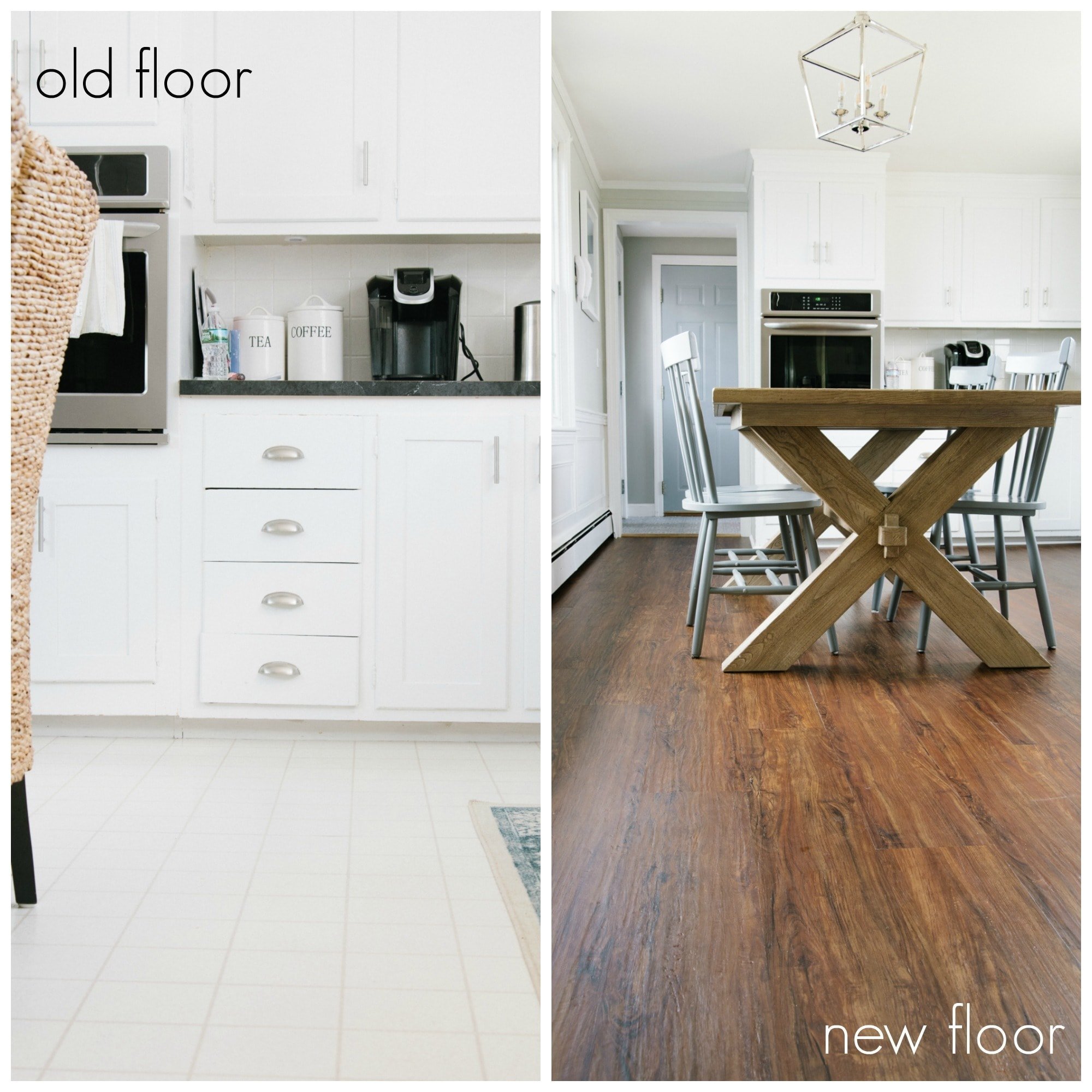
Are you familiar with Luxury Vinyl Plank flooring? It looks like wood, is easy to install, waterproof, and so easy to clean. It’s also virtually indestructible and a good solution if you need affordable flooring. If wood isn’t your thing, vinyl floor stickers might be a better fit for you!
If you’ve never installed luxury vinyl plank flooring, don’t let anyone scare you away from it. It’s so incredibly easy to install. Honestly, it’s very beginner DIY friendly because you need little to no tools (and just a bit of common sense!) to install it.
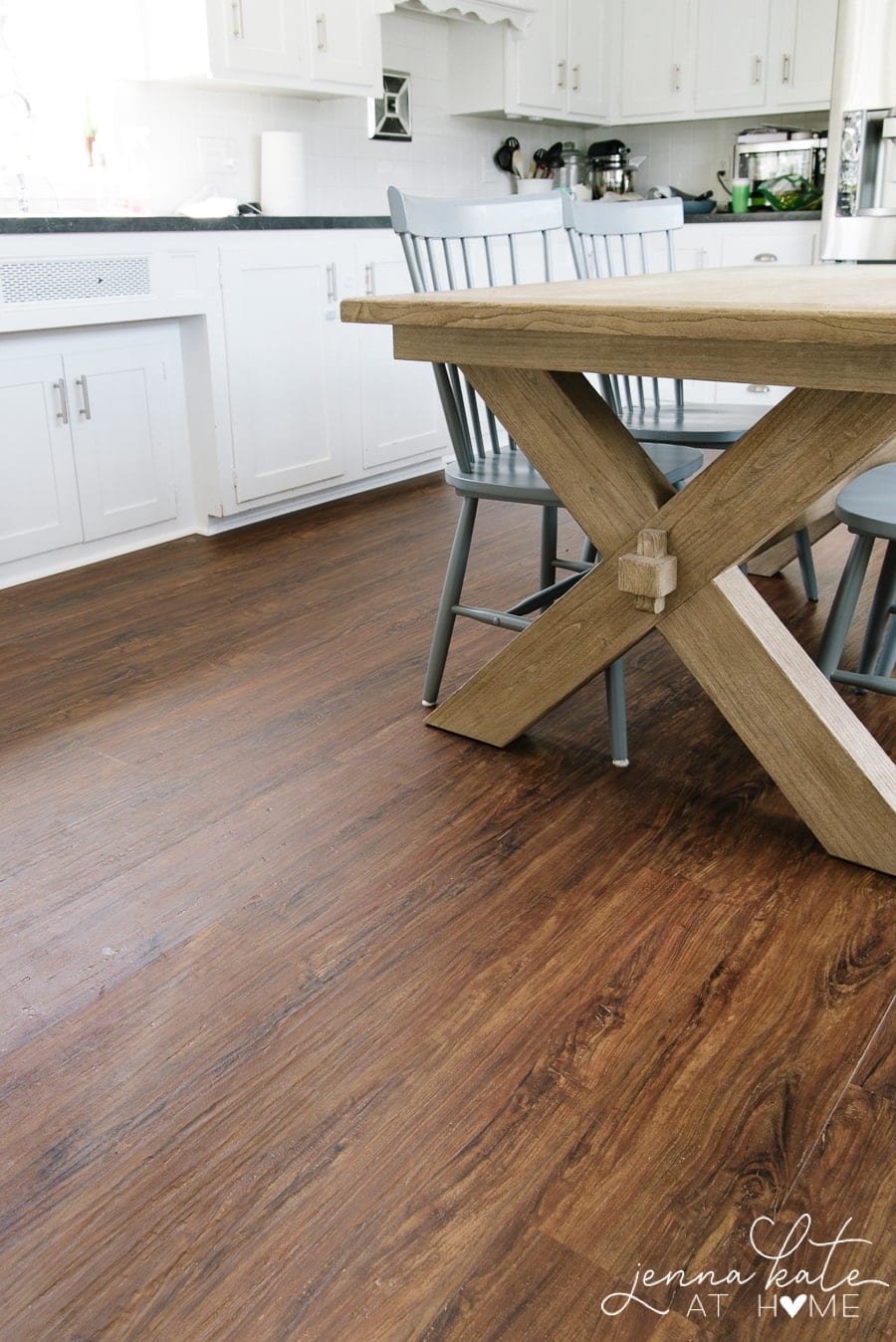
I’m at home with my kids every day and I managed to get our fairly large kitchen finished in 3 naptimes. That’s about 7 hours in total, from start to finish with a few breaks thrown in!
While the generally installation process is very straight-forward, there are a few things that I learned and figured out along the way that will help you possibly do it even quicker than that.
Do You Need Underlayment for Vinyl Plank Flooring?
If you are laying vinyl plank flooring over an existing floor such as tile or linoleum, then no underlayment is needed. If you are installing directly over a subfloor, then you will need to install a moisture barrier first. Underlayment is optional in all situations but does allow for more cushion and noise absorption.
How to Install Vinyl Plank Flooring
Before I start, it’s important to know that I was dealing with 4mm thick luxury vinyl plank (LVT) flooring. This thickness of plank is designed to “score and snap” meaning you score it with a utility knife, then bend the plank until it snaps along the line. Thicker LVT planks that have built in underlayment and other features require power tools to cut so some of the tips I’m going to share won’t necessarily apply.
This type of flooring floats and can be installed directly over an existing floor. In our case, there’s a possibility of asbestos underneath our linoleum so laying these planks right over it meant we didn’t need to worry about that.
We chose the color Cider Oak from the Home Decorator’s Collection available in stock at Home Depot. The boxes are crazy heavy, though, so I highly recommend having it shipped to your home.
Picking a Starting Point and Direction To Flow The Planks
This is an important first step no matter what type of flooring you’re about to install – real wood, LVT, laminate or tile. You always need to figure out the direction. The general train of thought is to run the planks the longest way in order to make the space look larger.
However, if you are matching to an existing floor that is running the opposite direction or starting on the long side would mean more difficult cuts than if the planks were running the other way, feel free to do the opposite. Just put some thought into it before you start.
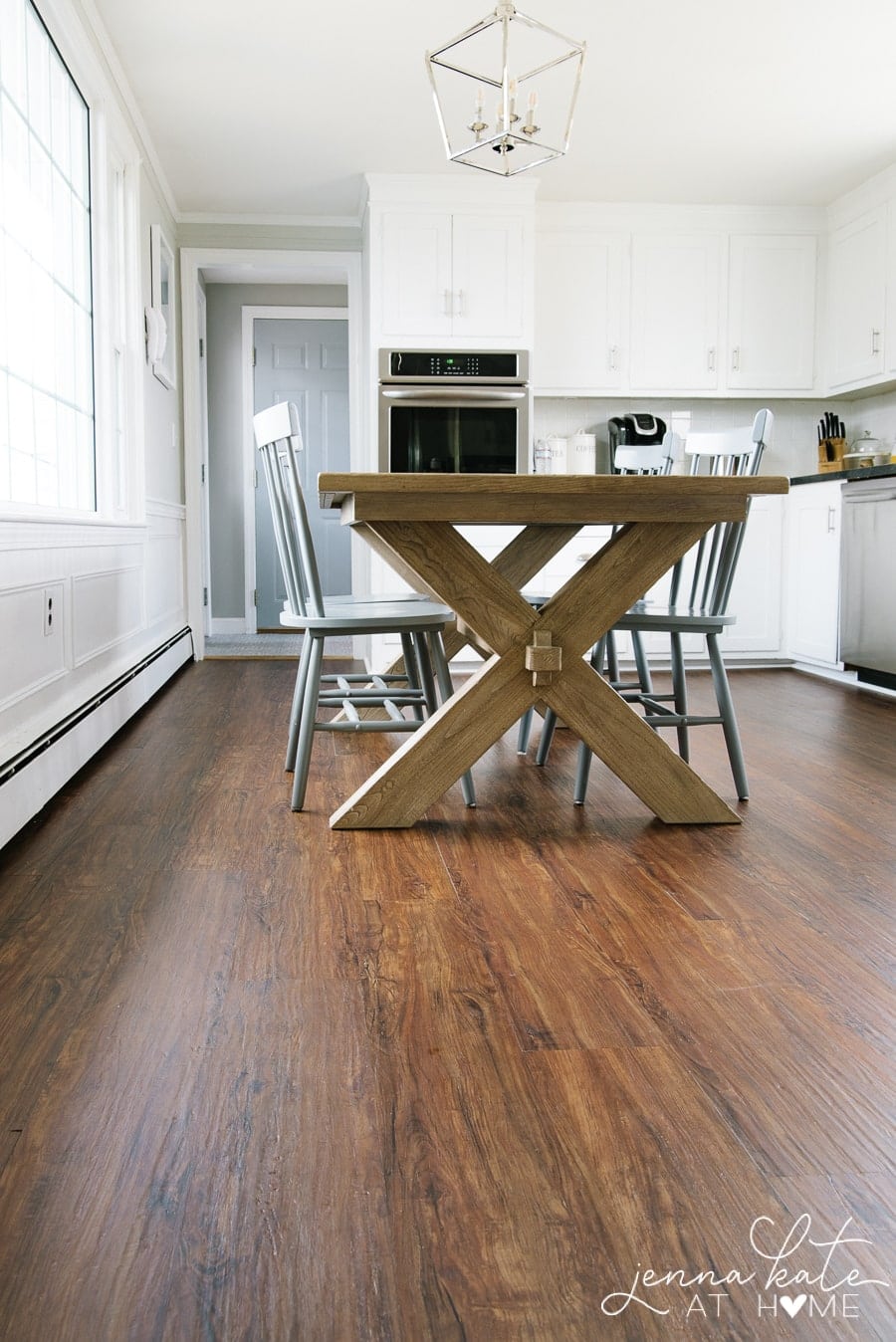
For this floor, running the LVT planks lengthwise was optimal because it meant less cuts overall. Which meant I could lay the flooring down more quickly. It is running the opposite direction to the flooring that it meets in the hallway, but since there will be a transition piece – and every room in my home seems to have hardwood that flows a different direction – I’m happy with my decision.
How to Cut The Planks
Make sure you have a new blade on your knife, a sharp edge (a metal speed square is ideal), a pliers and a colored pencil.
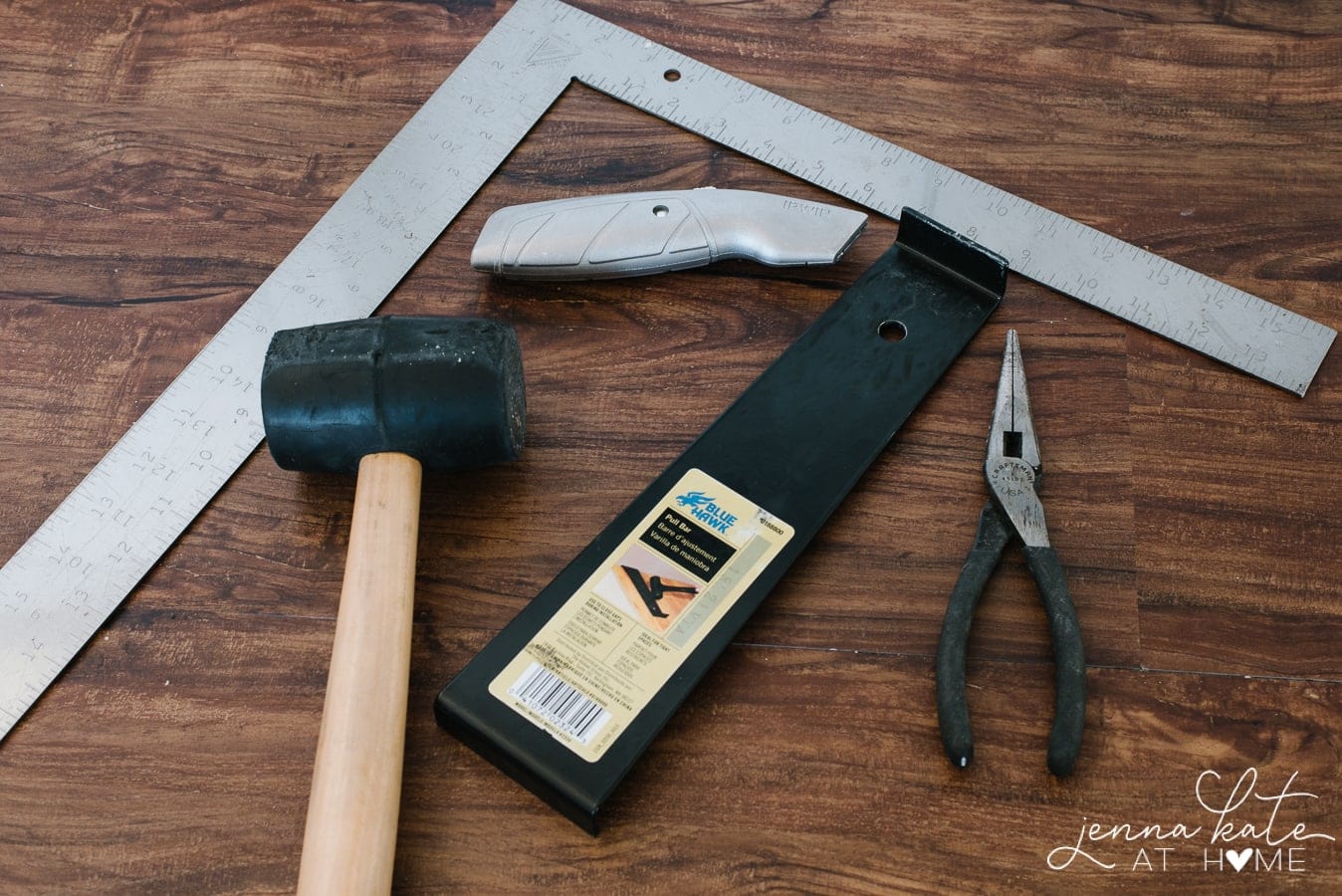
Cutting a straight edge is very easy. Measure where you need to cut, mark the line with a colored pencil using your speed square, then score along the line. Do this on the printed wood side of the plank, not the bottom. I like to re-score about 3 more times to make sure that I’ve scored deeply enough. Then bend the plank so that it snaps along the line. Easy!
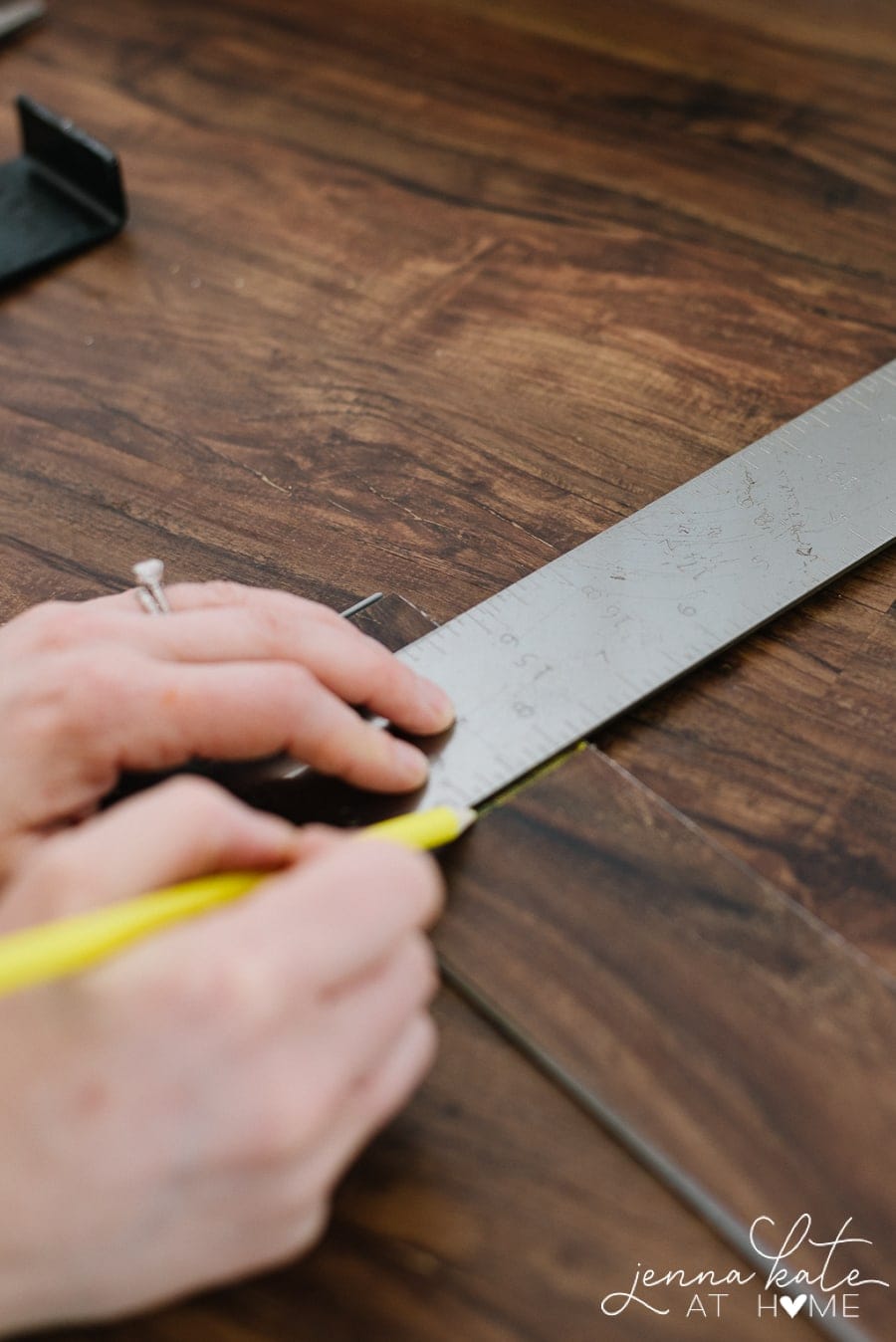
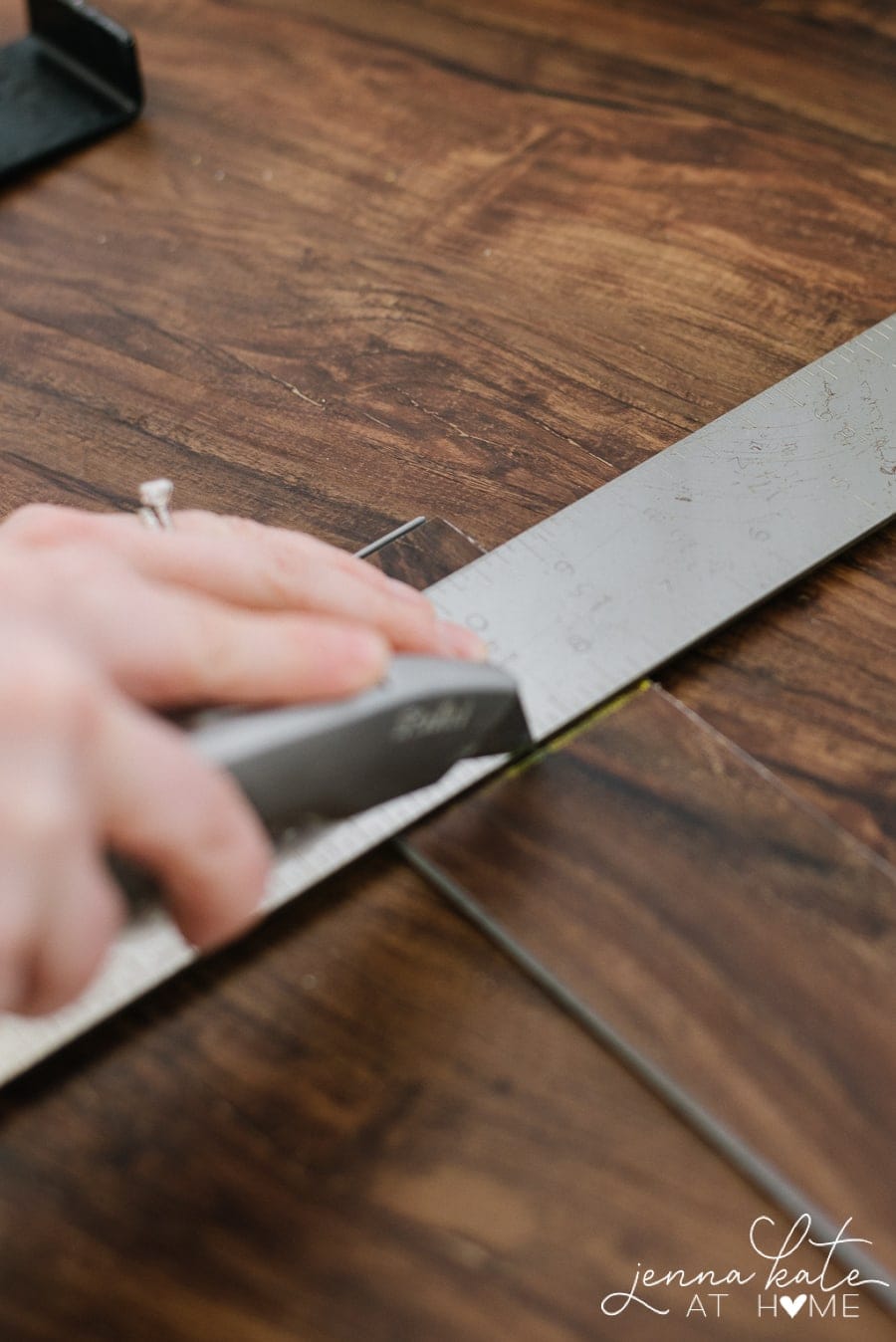
Cutting irregular shapes for corners, baseboards etc, is a little more involved but still easy enough. Measure/draw the outline of the shape that needs to be cut out of the plank. Using your speed square as much as you can, score the outline of the shape. This time, instead of bending the plank to snap it – which is difficult when you’re dealing with little bits that need to be removed, grab the pliers and snap the pieces off with it.
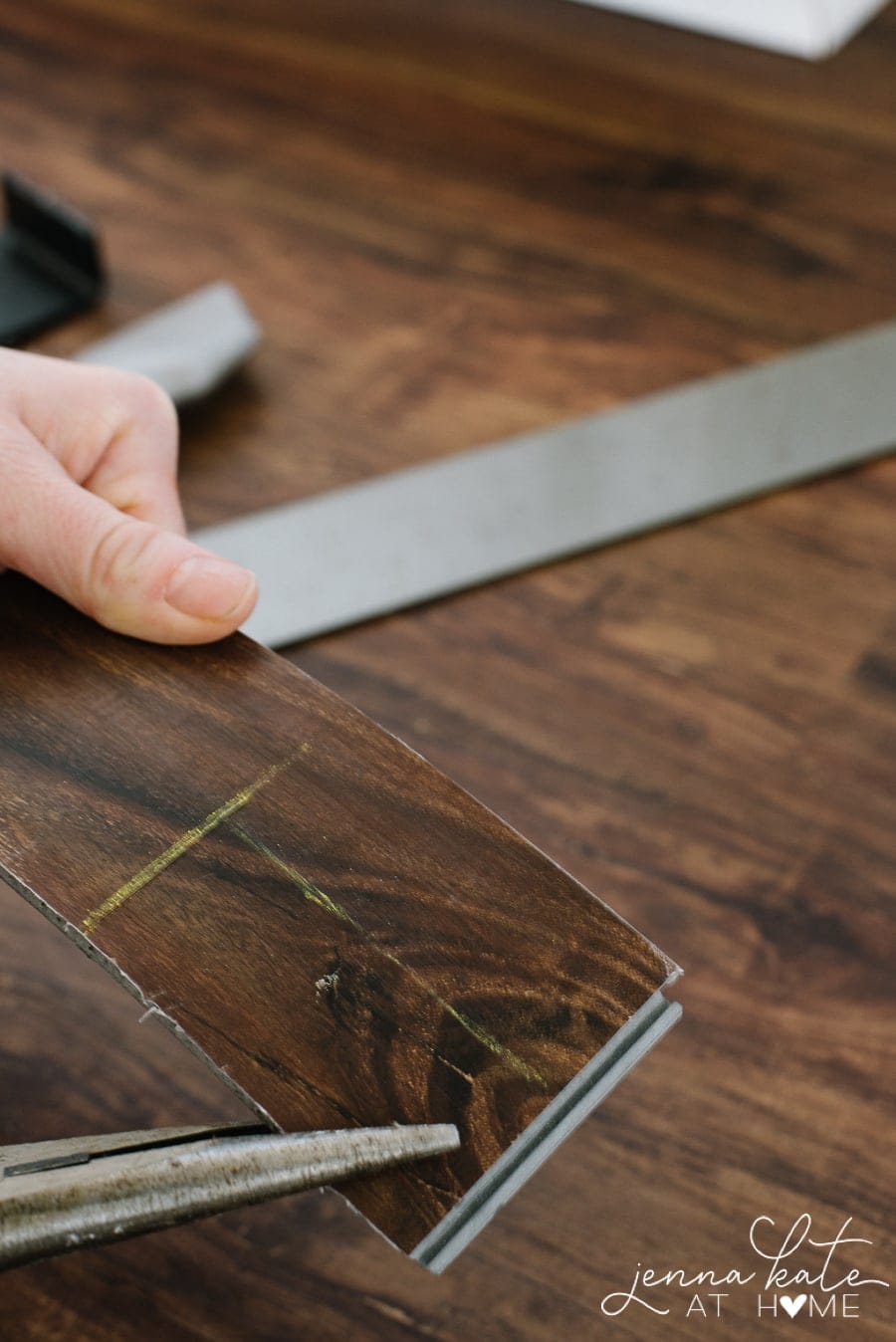
When you are initially starting, as well as when you start a new row, you will want to cut off the tongue.
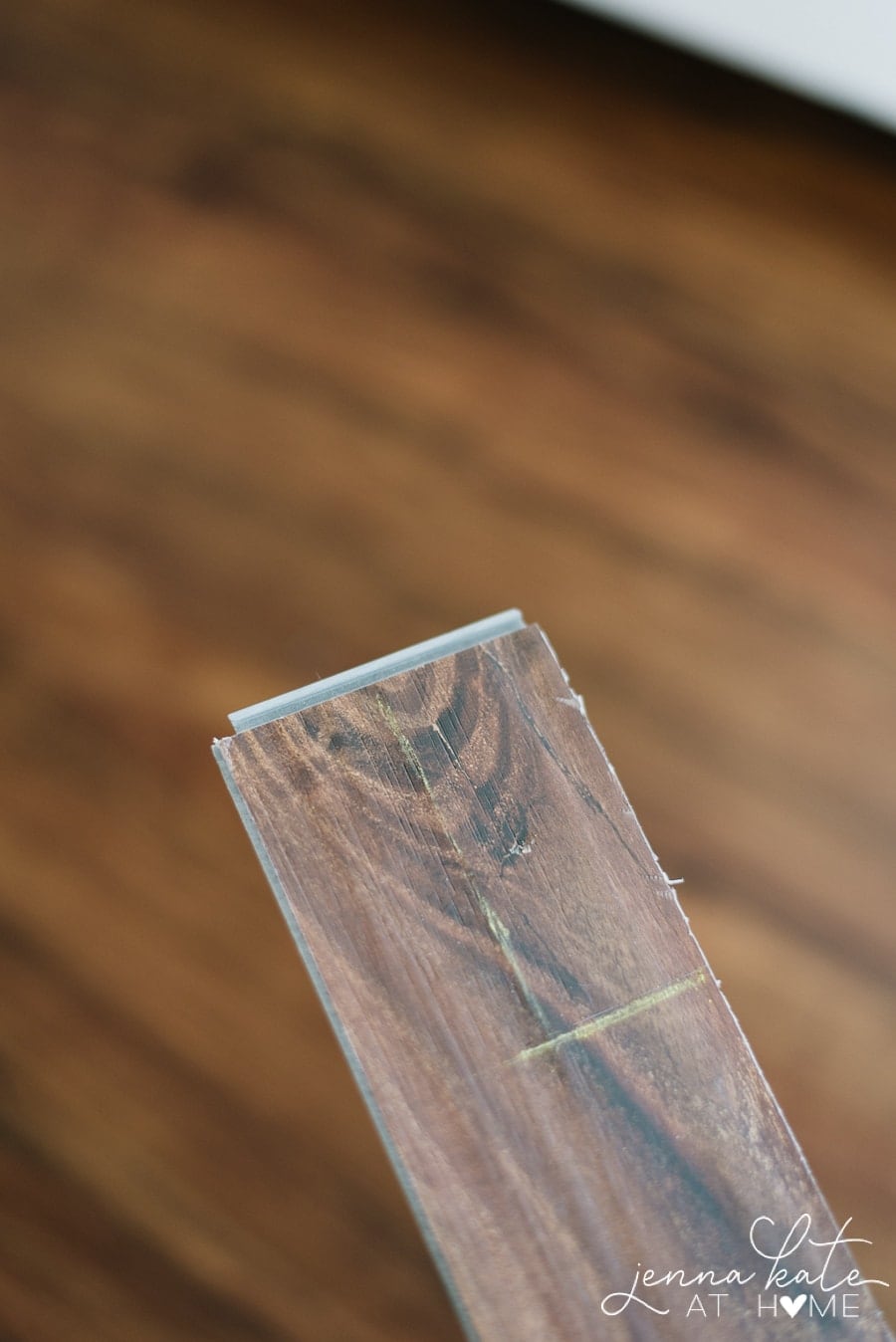
You can score it first and then slide the utility knife down but I found that it cuts so easily that you don’t need to score first. Just be careful that you’re cutting away from your body in case your hand accidentally slips.
Ensure the Planks Click Together Correctly
If your planks are not correctly clicked together, your floor will be compromised. Not only will you see gray lines throughout the floor but water could seep underneath since it’s not completely locked together to form a waterproof barrier.
I used 2 tools to ensure that my the tongue and groove connect perfectly every time. A pull bar and a rubber mallet.

The rubber mallet hammers down the short edges when they click together from left to right. Since it’s rubber, you can really give them a good whack in order to get them flush.
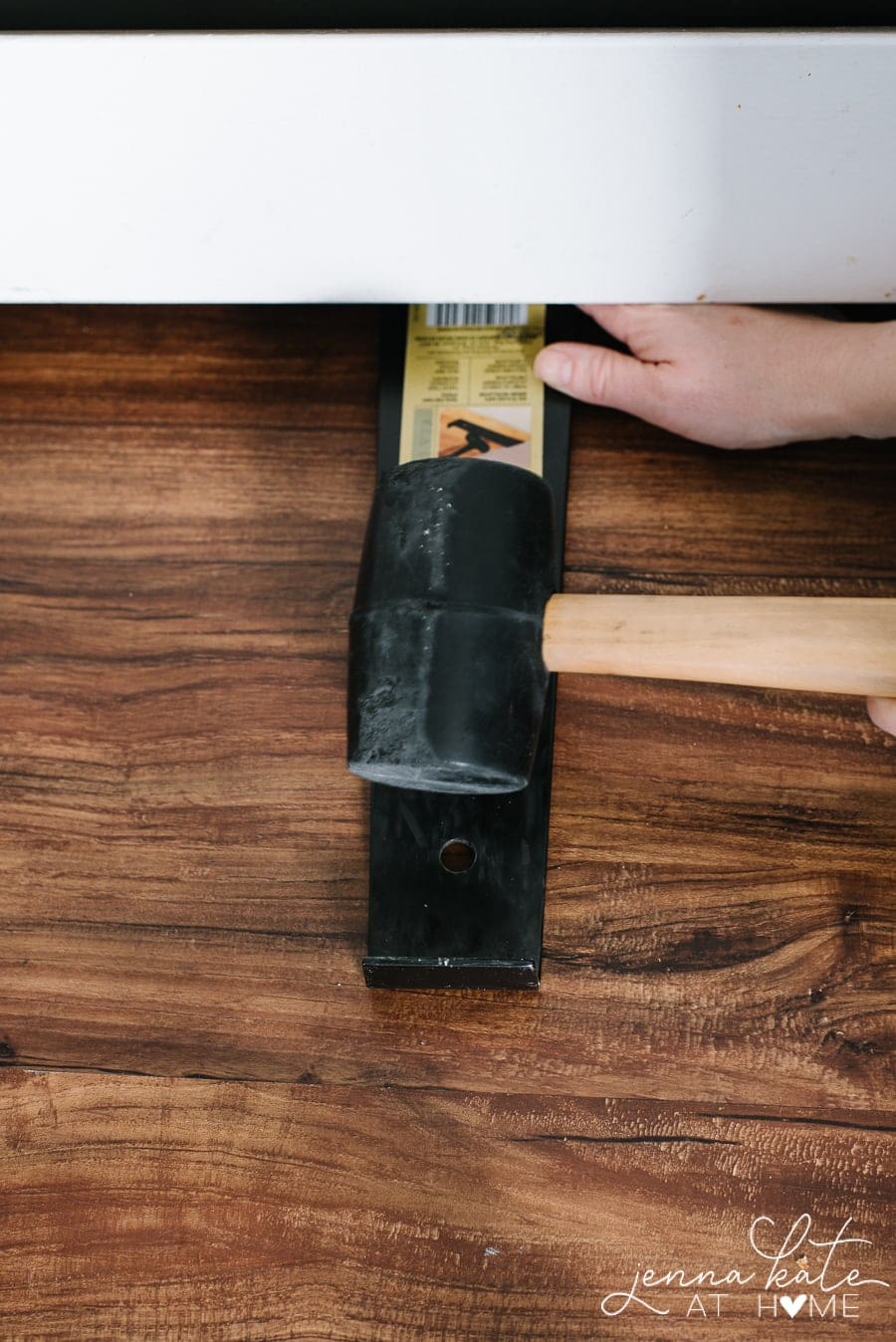
The pull bar is used to click the top top and bottom pieces together, again using the rubber mallet with the pull bar. Just be careful how hard you hit the mallet as the metal pull-bar could damage the planks if too much force is used along the sides. (The pull bar can also be used to slide the planks together on the sides but I found that they were very easy to slide into place without needing it. The only time I did use it once or twice was for the very last plank in a row).
Secure the Edges
A gap of about 1/4 of an inch should be left on all sides to allow to expansion and contraction. This gap is easily covered with a strip of quarter round along the edges. Transitions between different floors can be hidden with a standard transition piece or a T-molding if there’s a height difference. I used my nail gun to secure all these pieces in place.
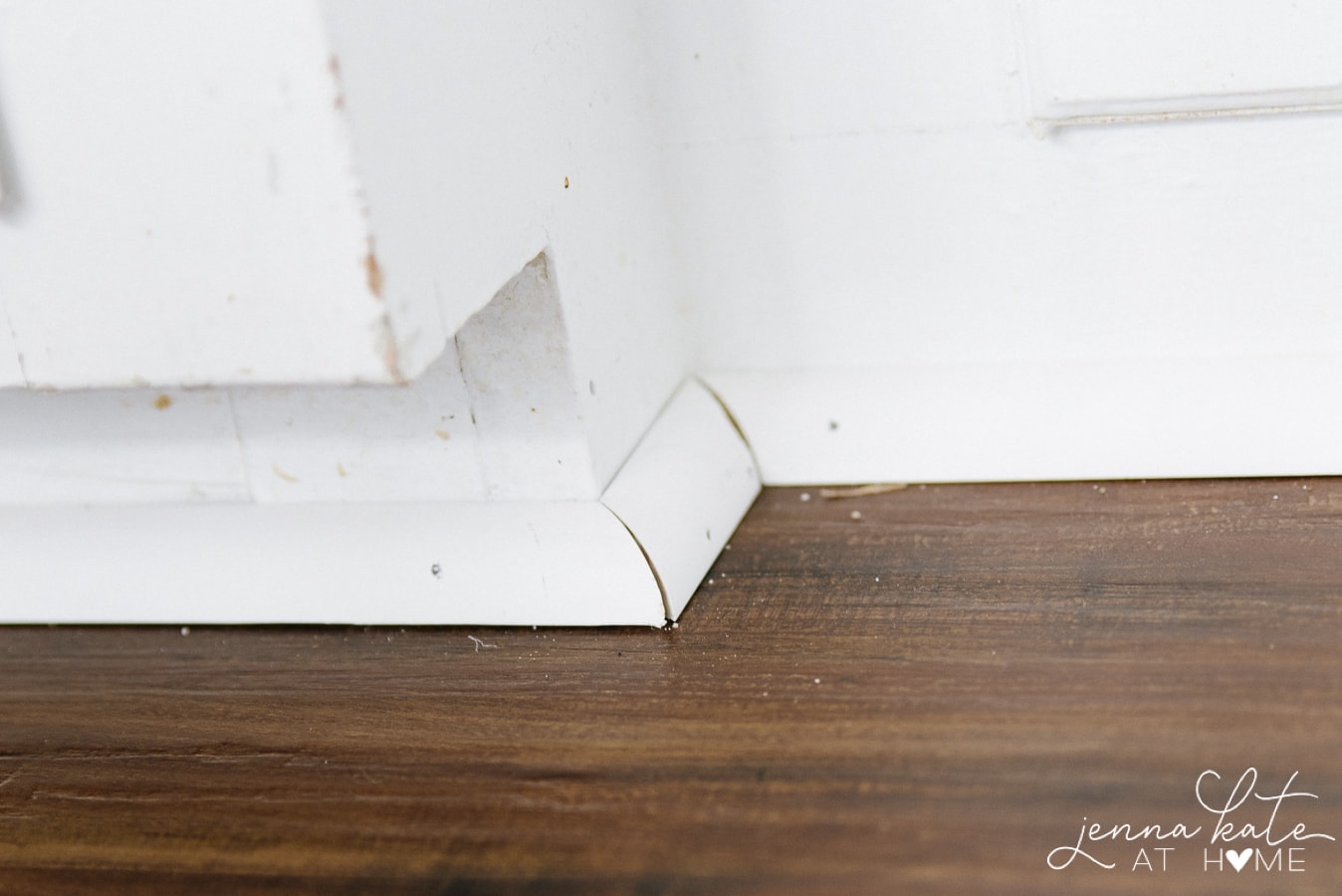
I still have to fill all the nail holes with spackle and add caulk to the seams. Once that’s done, you won’t even notice the little imperfections. If your kitchen has as many 45 degree angles as mine does but yet not a single cabinet is level, you can’t worry about 100% perfection with your cuts. Caulk is your friend!
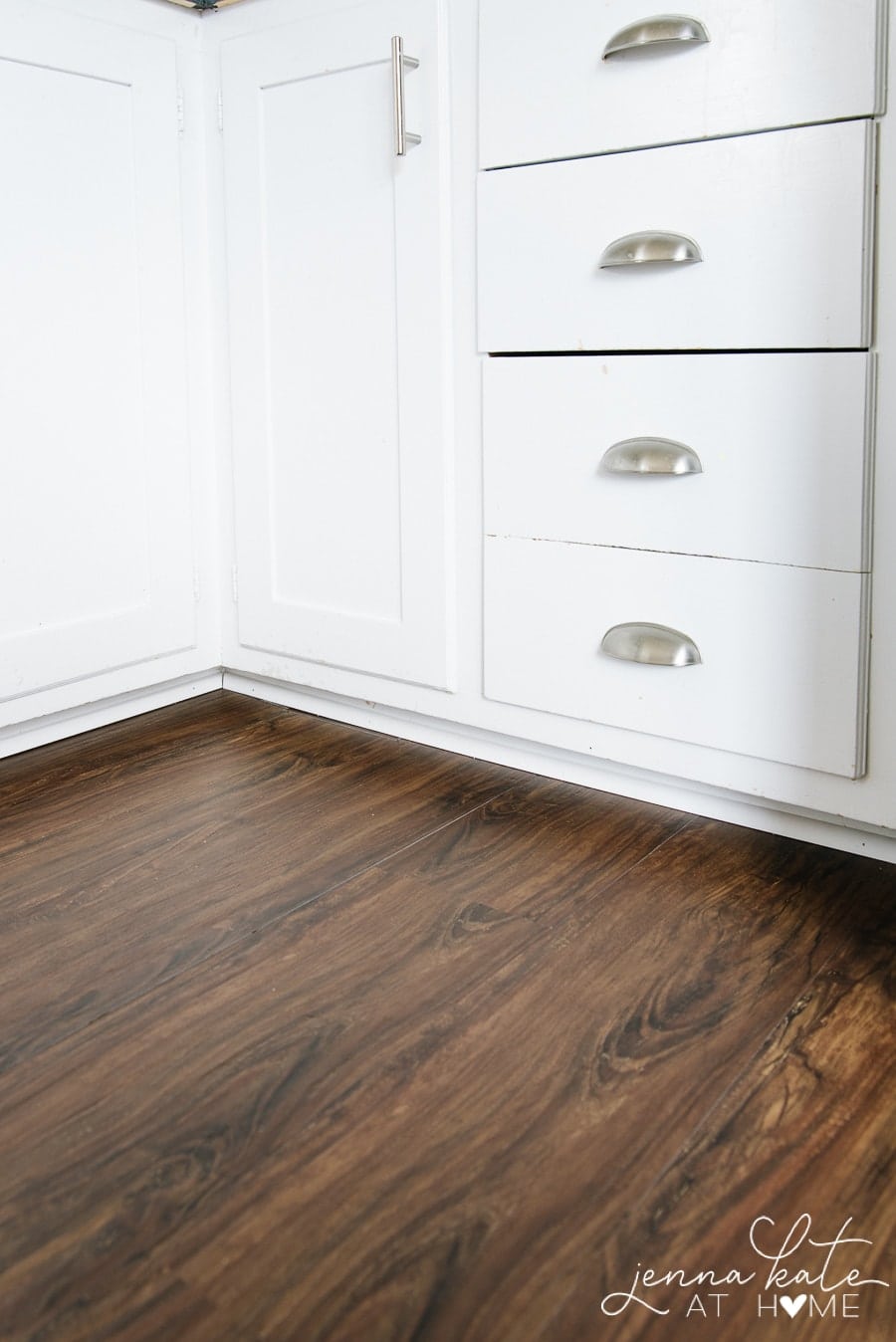
On another note, my tile arrived!! * happy dance*
Isn’t she beautiful?
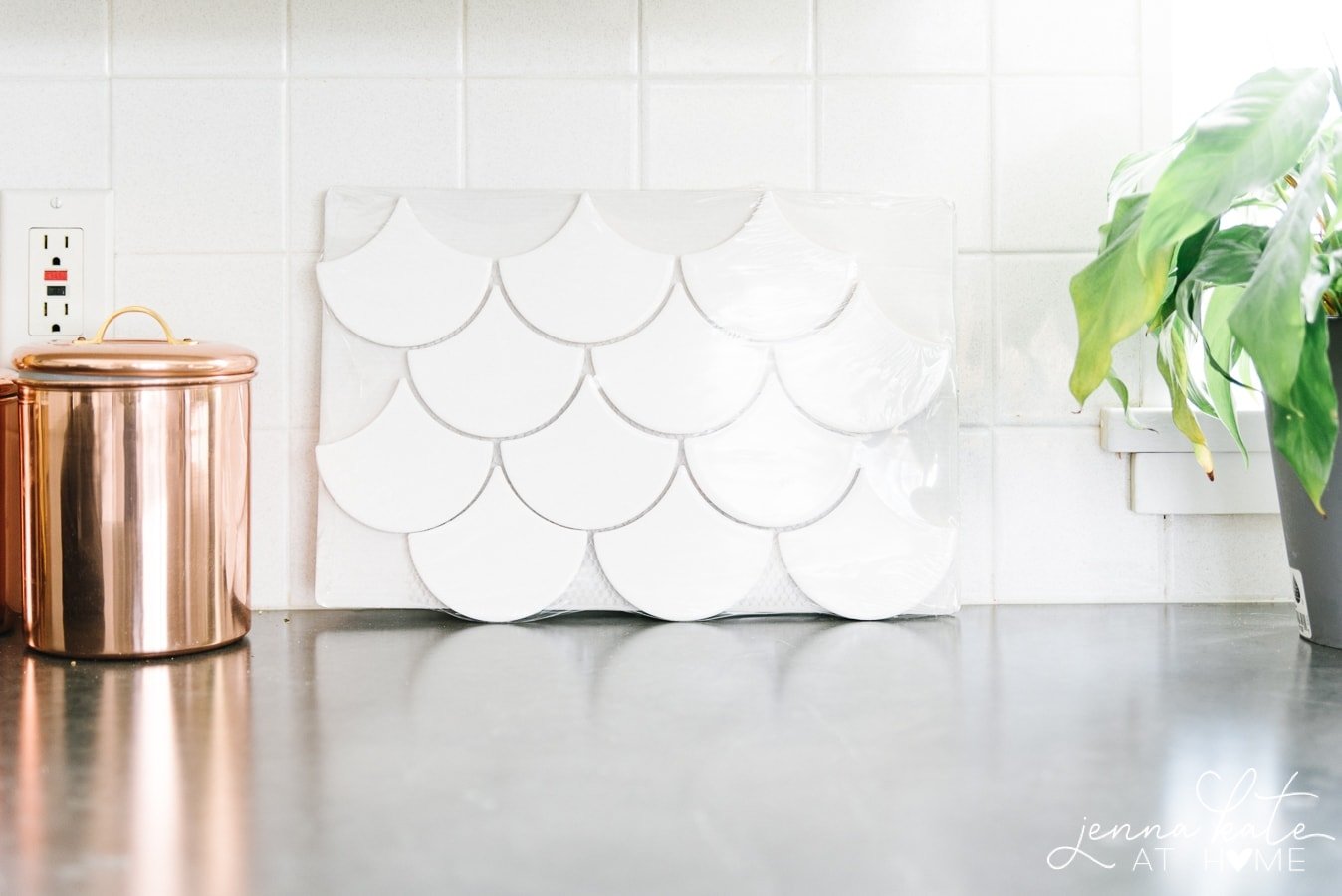
Demo on the old backsplash has just started but I have to wait for the electrician to do his thing before I can do much more. Luckily, he’s coming tomorrow so the new backsplash will be started this weekend!! Hopefully I’ll have enough done that I can share some of it with you next week!
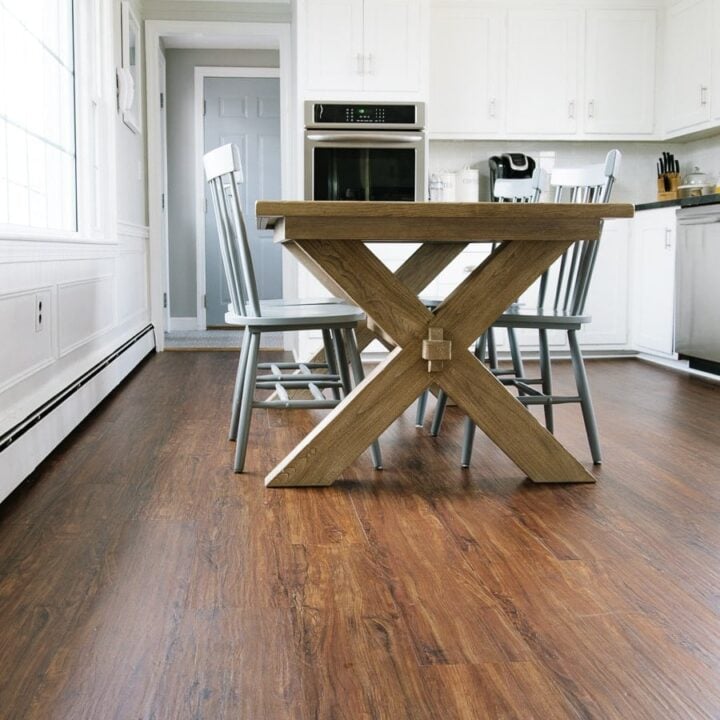
Install Luxury Vinyl Plank Flooring
Upgrade your old floors with an affordable, waterproof and virtually indestructible option - luxury vinyl planks!
Materials
- 4mm thick luxury vinyl plank (LVT) flooring
- Quarter-round molding for edges
- Transition piece
Tools
- Utility knife
- Metal ruler or speed square
- Pliers
- Colored pencil
- Rubber mallet
- Pull bar
- Nail gun
Instructions
- Decide on the layout and direction of the floor planks. Usually, you run the planks the longest way in order to make the space look larger. Exceptions are if you are matching to an existing floor that is running the opposite direction or starting on the long side would mean more difficult cuts than if the planks were running the other way.
- Measure where you need to cut, mark the line with a colored pencil using your speed square, then score along the line. Do this on the printed wood side of the plank, not the bottom. Re-score about 3 more times; then, bend the plank so that it snaps along the line.
- To cut irregular shapes for corners, baseboards etc, measure/draw the outline of the shape that needs to be cut out of the plank. Using your speed square, score the outline of the shape. This time, instead of bending the plank to snap it, grab the pliers and snap the pieces off with it.
- When you are initially starting, as well as when you start a new row, you will want to cut off the tongue. Simply score and cut (no pliers needed).
- Make sure the tongue and groove of every plank connect properly by using a pull bar to align them and a rubber mallet to hammer them down.
- Secure the edges by leaving a gap of about 1/4 of an inch on all sides to allow to expansion and contraction. This gap is easily covered with a strip of quarter round along the edges.
- Finally, use a standard transition piece or a T-molding between rooms if there's a height difference. Attach with a nail gun.
Notes
If you are laying vinyl plank flooring over an existing floor such as tile or linoleum, then no underlayment is needed. If you are installing directly over a subfloor, then you will need to install a moisture barrier first.
Need to catch up on past weeks of the kitchen makeover?
Week 1: The Before
Week 2: The Kitchen Design Plan

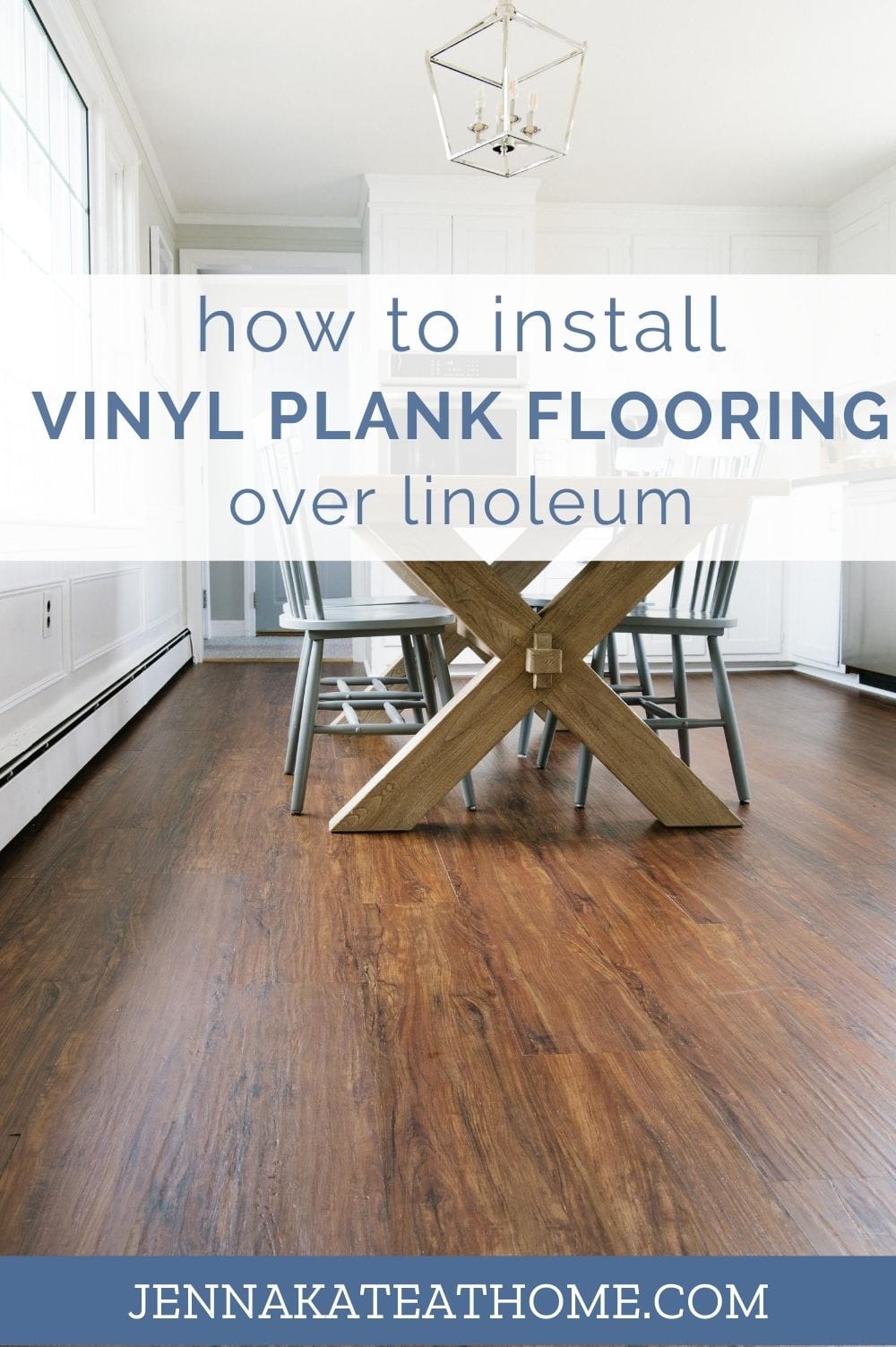

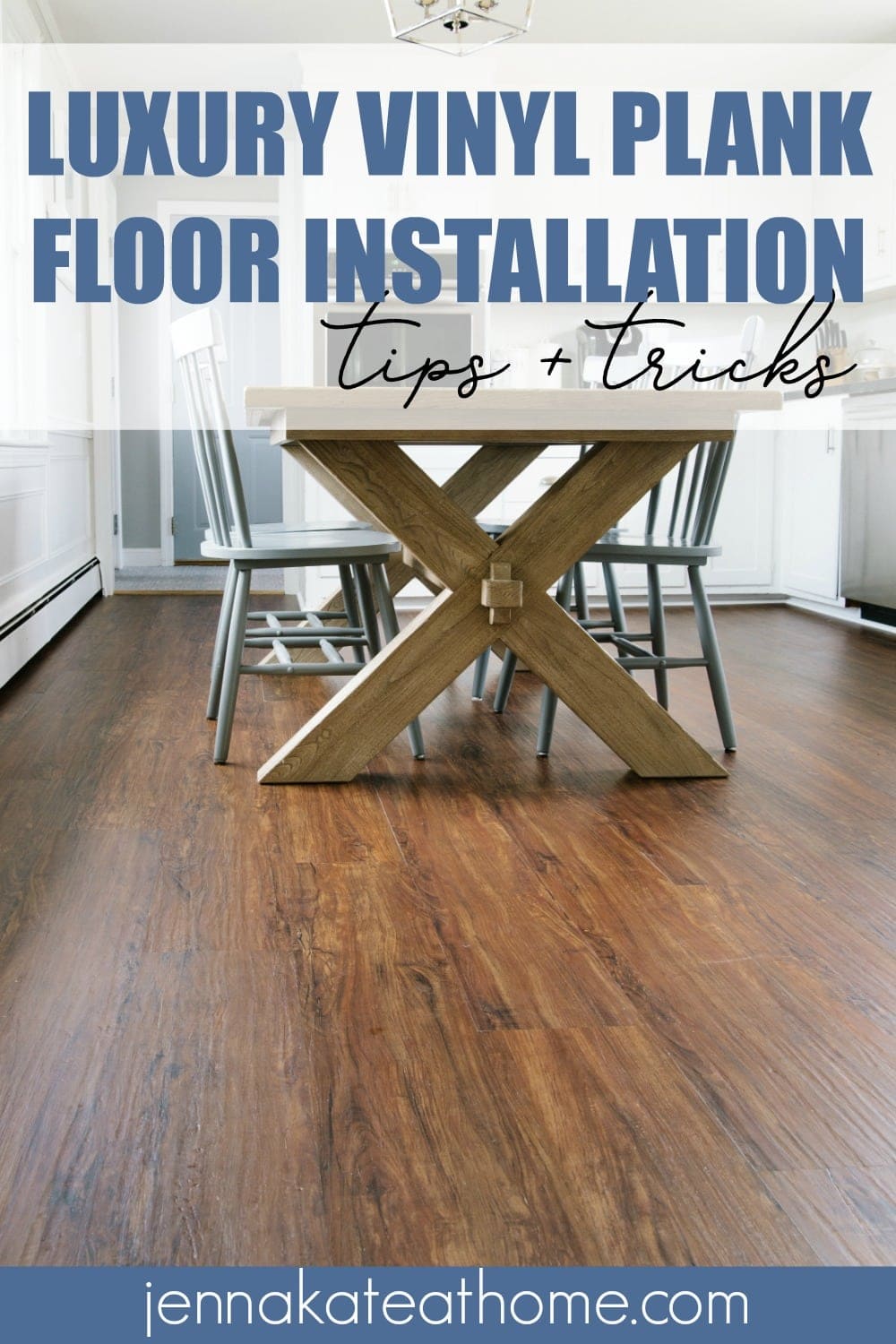


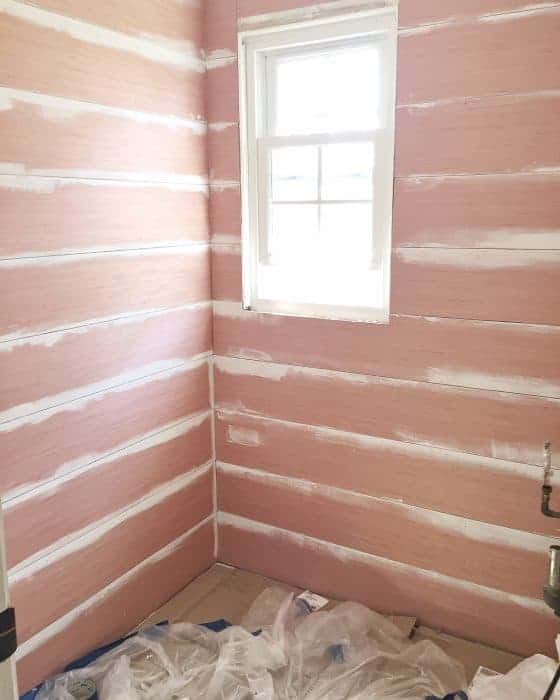

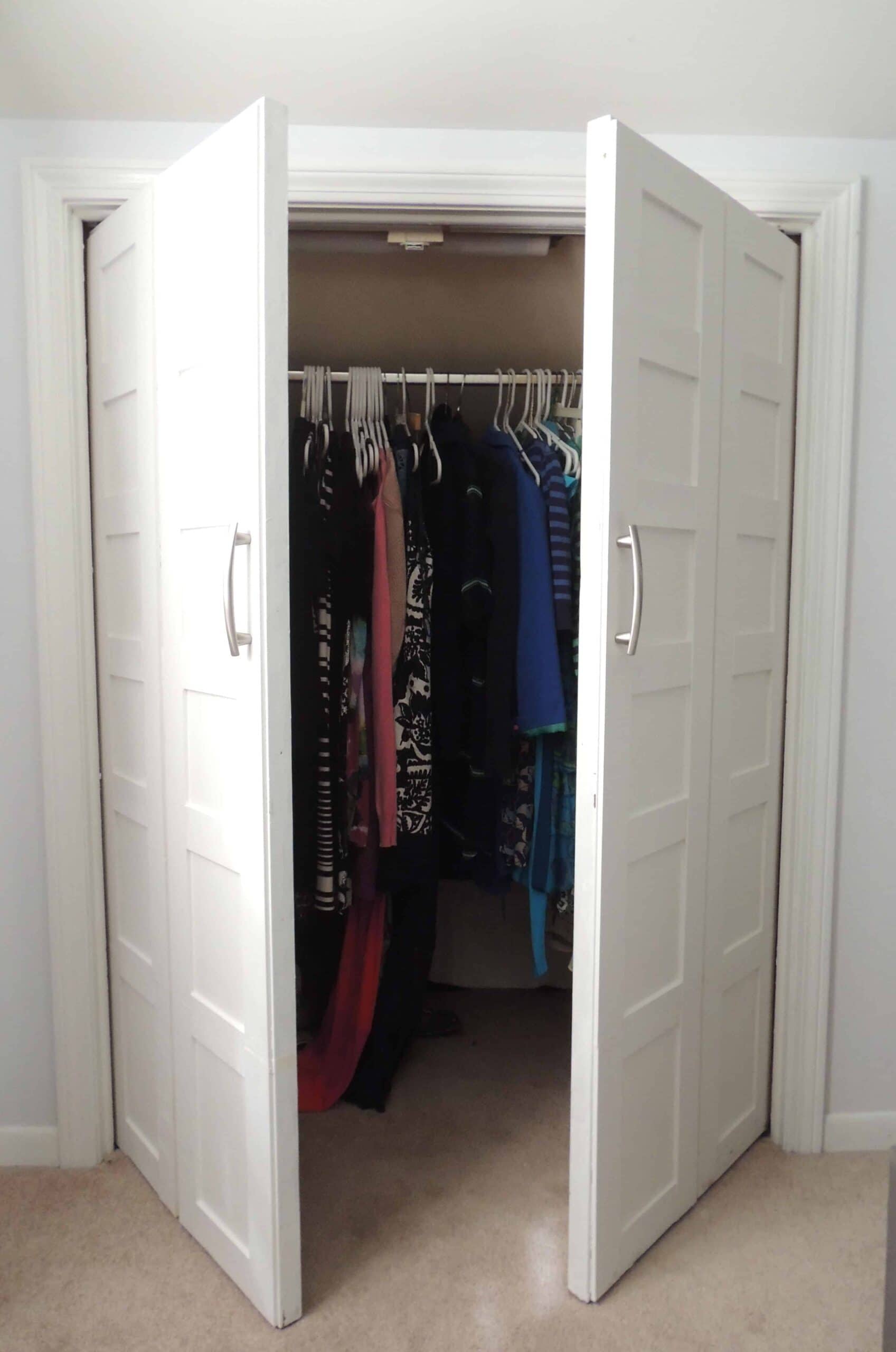

Hi. I really enjoy your site.
Just one quick edit for this post –
The straight edge you are using is called a ‘framing square’.
A ‘speed square’ is the little triangular one.
You may want to edit the post with this small correction.
Thanks –
Ahhh! Thanks for the tip! You learn something new every day :-)
You’re doing a great job!! Love the updates and your detailed instructions. Keep up the good work Jenna! I just casted my vote for you!! <3
Thank you so much, Lilly! I appreciate it!!
Did you remove the previous flooring or just go over the top of it? I’m thinking of using the same product!
Right over the top! Our linoleum possibly has asbestos so we needed something that could float right over it.